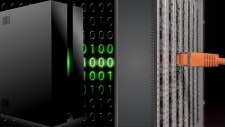
1. Hook-Up an External Hard Drive
External hard drives generally come with so much storage space that they can actually be used in place of internal hard drives. Of course, you should be cautious of the fact that external hard drives can be corrupted just as easily as any other type of storage portal. If you read the instructions that come with your external hard drive and hook it up correctly, you won’t ever have to remember if you have successfully backed up your data again.
2. Save Your Data on a USB Drive
Once you plug in a USB stick it’s pretty easy to forget that it’s even there. These small, portable plug-and-play devices can save up to hundreds of gigabytes of data in one location. Compared to data recovery pricing on computers with a huge amount of storage space, you would be much better off keeping your main files on a USB stick rather than trying to recover every file you have created on a single computer. You can also change the settings on your computer so that your files are automatically saved via USB.
3. Email Important Files to Yourself
If you end up sending most of the files that you create on your computers to your colleagues, supervisors, friends or co-workers, you might as well save yourself a little extra work by adding your email address as a recipient. You can set up most email accounts to blind copy yourself on all outgoing emails, enabling you to readily have copies of all your most important files, photos and movies.
4. Sync Your Digital Devices
Many computers, tablets and even smartphones require you to login with a user login, such as an Apple ID or Microsoft Live. If you use the same login credentials on several of your devices you can sync them together, enabling you to keep your data backed up in several different places. Of course, this could make all of your computers and digital devices more susceptible to viruses, but the tradeoff is that you won’t need to remember to manually back up any of your files.
No one ever realizes how important it is to keep an extra copy of their data saved outside of their computer’s internal hard drive until said data becomes inaccessible. It could be a virus or a fried motherboard that makes you realize the error of your ways, but there is still hope. Virtually any kind of computer data can be recovered if you go to a computer expert. What you will learn is that is it best to simply keep a secondary copy of your files in a place that you can easily get your hands on.